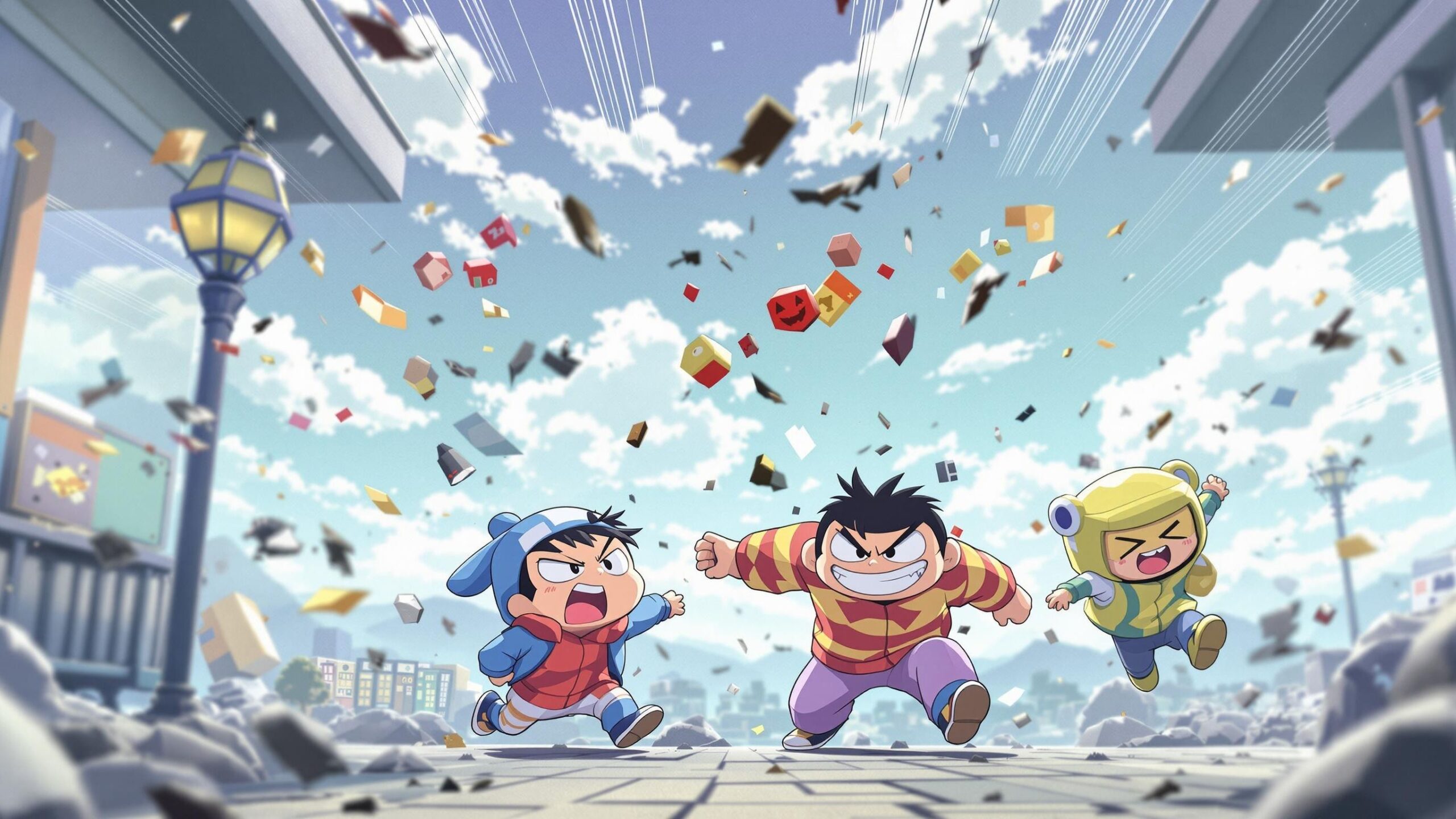Since its launch with Battlefield 1942, the Battlefield series has set itself apart from other shooters by emphasizing scale, teamwork, and unforgettable sandbox warfare. Central to that identity are the maps—the sprawling, chaotic, and beautifully destructive playgrounds where soldiers, tanks, jets, and helicopters collide in epic clashes. Great Battlefield maps offer more than just good visuals; they offer dynamic combat experiences where no two matches feel exactly the same. They invite players to invent strategies on the fly, to fight tooth and nail over key objectives, and to forge unforgettable moments of triumph and disaster. Across the many iterations of the series, certain maps have risen above the rest to earn the title of iconic. These are the maps that players reminisce about, debate endlessly, and demand to see return again and again. Here are the top ten Battlefield maps that became legends—and why they continue to capture the hearts of fans.
#10: Wake Island (Battlefield 1942)
Few maps scream Battlefield louder than Wake Island. Introduced in Battlefield 1942, Wake Island set a new standard for what a multiplayer battlefield could feel like. Its distinctive horseshoe-shaped layout forced players into brutal chokepoints while allowing for creative flanking maneuvers with amphibious vehicles and aircraft. Wake Island perfectly blended infantry, armor, and air combat, making it a playground for tactical experimentation. The open ocean provided a dramatic approach for naval assaults, while entrenched defenders desperately fought to hold the central island points. In many ways, Wake Island captured the essence of the entire Battlefield philosophy: large-scale combined arms warfare where a well-coordinated team could turn the tide against overwhelming odds. Wake Island has been remade and reimagined across multiple games, including Battlefield 3 and Battlefield V, but no matter the version, its DNA remains unmistakable. It’s chaotic, it’s brutal, and it’s the birthplace of countless legendary moments.
#9: Operation Metro (Battlefield 3)
Operation Metro is a map that sparked endless debates—and endless hours of combat. Released with Battlefield 3, Metro was infamous for its brutal, claustrophobic infantry battles. Unlike the wide-open maps Battlefield was known for, Metro shoved players into tight underground subway tunnels, turning matches into meat grinders of grenades, shotgun blasts, and chokepoint holds. Yet despite—or maybe because of—its chaos, Metro became beloved by a massive portion of the player base. It distilled Battlefield’s teamwork and strategic pressure into a pure form: if your squad couldn’t coordinate to break through or defend a choke, you were doomed. Metro’s simple three-stage design—park, tunnels, and subway station—kept the action moving without ever losing that suffocating sense of tension. Whether you loved it for the challenge or cursed it for the stalemates, there’s no denying that Metro carved out its place in Battlefield history.
#8: Caspian Border (Battlefield 3)
If Operation Metro was about claustrophobia, Caspian Border was about freedom—and destruction. One of Battlefield 3’s showcase maps, Caspian Border was a sprawling, forested expanse featuring rolling hills, highways, forests, and a giant communications tower that could be brought crashing down mid-match. Caspian Border wasn’t just massive; it felt alive. Dogfights raged overhead, tank battles erupted in fields, and infantry squads fought brutal, gritty skirmishes among the trees and abandoned checkpoints. The map’s dynamic scale rewarded all styles of play: snipers could dominate open ground, engineers could ambush tanks with mines and RPGs, and pilots could turn the tide with air superiority. Few maps captured the feeling of total war quite like Caspian Border. It was a love letter to the core Battlefield experience: chaos, freedom, and those once-in-a-lifetime moments that only happen when every system collides perfectly.
#7: Siege of Shanghai (Battlefield 4)
Siege of Shanghai delivered one of the most jaw-dropping moments in Battlefield history with its famous “Levolution” event: the collapse of the skyscraper at the map’s center. But even beyond that spectacle, Shanghai became an instant fan favorite because it offered the perfect fusion of infantry and vehicular combat. Players could battle across the streets, sprint through the lower levels of the towering skyscraper, command tanks along the wide avenues, or take to the water with attack boats. Every inch of Siege of Shanghai felt like a warzone, with urban warfare at its finest. Even small choices—like which bridges to destroy to cut off armor advances—had strategic weight. And when the skyscraper finally fell, covering the battlefield in choking dust and debris, it fundamentally altered the fight. Shanghai proved that Battlefield’s scale wasn’t just about size—it was about dynamism, spectacle, and giving players the power to change the fight in dramatic ways.
#6: Arica Harbor (Battlefield: Bad Company 2)
Arica Harbor stands as a shining example of why Battlefield: Bad Company 2 remains so beloved. Set in a dusty, war-torn desert town, the map offers a beautifully balanced combination of infantry, vehicle, and vertical combat. Each phase of a Rush match on Arica Harbor feels distinct: the opening wide-open assault across sandy plains gives way to brutal street-to-street urban fighting, culminating in a desperate defense among the shattered buildings. This gradual shift from open to claustrophobic battlefields keeps players on their toes, forcing constant adaptation. Tanks dominate the early sections, but once you’re fighting among the rubble, it’s all about close-range gunfights and clever use of cover. Arica Harbor’s design rewards teamwork more than raw skill; squads that coordinate their pushes and flanks dominate. Its mix of pace, atmosphere, and strategic flexibility made it an instant classic. To this day, Arica Harbor is held up as one of Battlefield’s best examples of how to design a map that feels epic without feeling overwhelming.
#5: Kharg Island (Battlefield 3)
Kharg Island embodies the idea of “no safe space” in Battlefield. Originally released with Battlefield 3, Kharg Island threw players into a savage struggle for control across a battered oil-processing island. Its Rush mode stands out as particularly legendary: defenders had to scramble to repel amphibious assaults, paratrooper landings, and armored columns simultaneously. Meanwhile, attackers needed perfect coordination to punch through brutally fortified objectives. What made Kharg Island exceptional was its dynamic frontlines. Even small changes in map control—like seizing a forward spawn point or holding a critical ridge—could dramatically shift the momentum of battle. The map’s visuals also reinforced the feeling of desperate struggle: burning oil fields, collapsed shipping containers, and smoke-filled skies made it feel like the world was tearing itself apart around you. Kharg Island remains a fan favorite because it captured Battlefield’s chaotic beauty at full force—a place where every inch you gained had to be fought for tooth and nail.
#4: Amiens (Battlefield 1)
In a game filled with stunning World War I battlefields, Amiens stood out for its grim urban carnage. Set amid the shattered ruins of a French city, Amiens pushed infantry combat to brutal new levels. Players battled through bombed-out buildings, collapsed tram lines, and smoldering rubble, fighting over key objectives like the massive church and ruined train station. Vehicles played a critical role, but Amiens shined brightest in its street-to-street infantry battles. Every alley and side street could hide enemies; every second-floor window could rain death on the unwary. Unlike some of Battlefield 1’s more open maps, Amiens forced players into vicious, claustrophobic fights where grenades, shotguns, and bayonets ruled. Yet despite the chaos, Amiens never felt unfair—it rewarded situational awareness, teamwork, and map knowledge beautifully. The combination of visual storytelling, tactical depth, and breakneck pacing turned Amiens into a standout and secured its place as one of the most memorable maps of the modern Battlefield era.
#3: Noshar Canals (Battlefield 3)
If you ever played Battlefield 3, you probably spent countless hours grinding weapons and dog tags on Noshar Canals. Though originally designed as a large Conquest map filled with cranes, cargo ships, and industrial zones, Noshar became legendary thanks to its tight infantry battles, especially on Team Deathmatch mode. It’s simple, rectangular layout—with close-quarter arenas around shipping containers and long lines of sight across open docks—made it an instant classic for players who wanted fast, brutal fights without losing Battlefield’s signature tactical depth. Squads could lock down areas with careful positioning or go aggressive with flanking and suppressive fire. Noshar’s genius lies in how adaptable it is: it supports every playstyle, from snipers camping cranes to shotgunners sprinting through alleys. Even years after its prime, Noshar Canals is still celebrated for offering the perfect blend of chaotic action and methodical strategy—Battlefield at its grittiest and most addictive.
#2: Grand Bazaar (Battlefield 3)
Grand Bazaar perfectly captured the chaos of urban warfare. Set in the tight, dusty streets of Tehran, the map thrust players into nonstop close-quarters combat. Every corner, every alley, every market stall could hide enemies ready to ambush. Yet despite its tight quarters, Grand Bazaar wasn’t just mindless shooting. Smart squads who controlled key choke points—like the central courtyard or the narrow flanking alleys—could dominate entire matches. Vehicles still played a role, but the map was truly a celebration of infantry skill: quick reflexes, smart grenade placement, and brutal close-range weaponry reigned supreme. Grand Bazaar also stood out because of its atmosphere: crumbling walls, abandoned shops, and echoing gunfire gave it a visceral, cinematic quality that few maps matched. It distilled the massive chaos of Battlefield into a smaller, more personal scale—and proved that sometimes, the best battles aren’t fought over open fields, but through the shattered remnants of a living, breathing city.
#1: Operation Locker (Battlefield 4)
When it comes to pure, unfiltered chaos, few maps can rival Operation Locker. Set inside a frozen, decaying Chinese military prison, Locker threw hundreds of players into brutal, claustrophobic tunnel fights where grenade spam, shotgun rushes, and desperate last stands became the norm. There were no vehicles here—just bodies, bullets, and blood. Choke points like the central control room or the narrow stairwells became legendary death traps, leading to some of the longest, fiercest, and most brutal stalemates in Battlefield history. Yet, even amidst the madness, Locker demanded strategy. Flanking through collapsed tunnels, timing pushes with coordinated smokes and flashes, and exploiting small breaks in enemy lines were all critical to victory. For many players, Locker was Battlefield distilled down to its most intense form: pure, unforgiving warfare. It remains the ultimate test of squad coordination and infantry prowess—and it earned its place as the most iconic Battlefield map of all time.
The Battlefield franchise has always been about more than just shooting enemies—it’s about fighting across living, breathing battlegrounds that shape the stories players tell long after the match ends. These ten maps didn’t just provide arenas for conflict—they created memories. They forced players to adapt, to think creatively, and to survive in worlds where chaos reigned. Whether it was the collapsing towers of Shanghai, the desert ambushes of Arica Harbor, or the brutal frozen corridors of Operation Locker, these iconic maps captured everything that makes Battlefield unforgettable. In a series defined by war on an epic scale, these battlegrounds became legends—and their legacy will endure for years to come.



